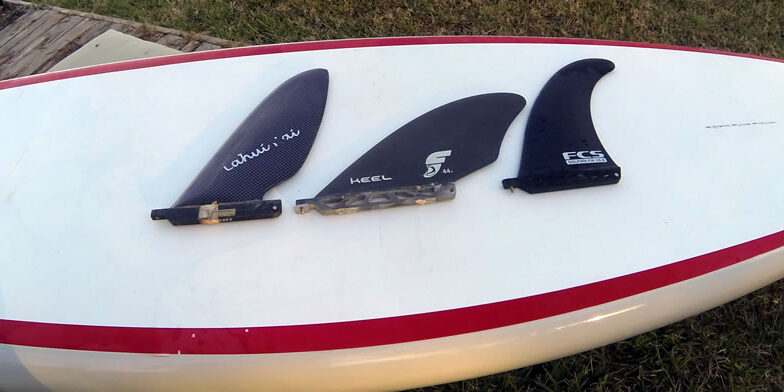Most SUP athletes are looking for ways to eke out a little more speed in their next race. First and foremost, a structured and intentional training plan is the best way to do that. But it’s possible to buy speed, too, maybe with a faster board…or a new paddle…or an alpine skiing race suit (hey, it could work…).
One piece of equipment that seems to have some potential to make or break your podium stroll at your next race is that bit hanging under your board…the fin. Like almost everyone else, we have opinions about our favorite fins.* This one feels faster. That one feels more stable. This one makes me feel like a ninja.
Despite all the fin options and opinions floating around out there, we’ve yet to see any actual test data with race paddleboard fins. So we unleashed our inner nerd, grabbed our Speedcoach 2 and headed out to the water to see what we could see. Seriously…how much difference can a fin make? It’s like an eighth of an inch wide, right?
Meet the Players
Today’s test was a bit impromptu, so we conducted today’s test with the first few fins we found in the stable. Mainly, we wanted fins of different pedigrees, shapes, and personalities. Here’s what we ended up with:

FCS
Dolphin 10.0
Retail: $18
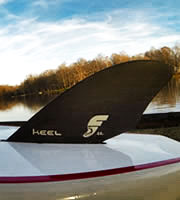
Futures Flatwater Keel
Retail: $104
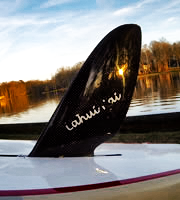
Lahui Kai Jamie Mitchell
Retail: Priceless
In the Hand
When you pick up these fins and you immediately feel the difference. The FCS Dolphin felt like…well, an $18.00 fin. Don’t get us wrong — it’s a great value, but it feels plasticky. The Futures Flat Water Keel 44.4 Carbon, touted as the fastest fin Futures makes, feels like a carbon fin should. It is light and stiff, and just feels fast in your hand. Last, the Lahui Kai fin, pulled off our vintage Surftech Lahui Kai Jamie Mitchell pintail, feels like a paperweight. Or a brick. The difference in weight is noticeable.
Under Foot
We can’t really talk about fins without giving our impression on how they felt in the water under the board. The Dolphin is steady as a rock, and tracks like a train.
The Keel fin offered the least stability of the three test fins, and that is to be expected. But the difference in stability was fairly negligible, and definitely wouldn’t prevent us from grabbing this fin in most flatwater conditions. What our test paddler DID note was the considerable difference in tracking when using this fin — if he didn’t purposely concentrate on getting the top hand out over the water on each stroke, the board angled off the intended course fairly quickly.
The Lahui Kai tracked straight — really straight, but felt heavy and sluggish in the water. Really sluggish. Cue ominous foreshadowing music here — the results aren’t always as you would expect…
The Protocol
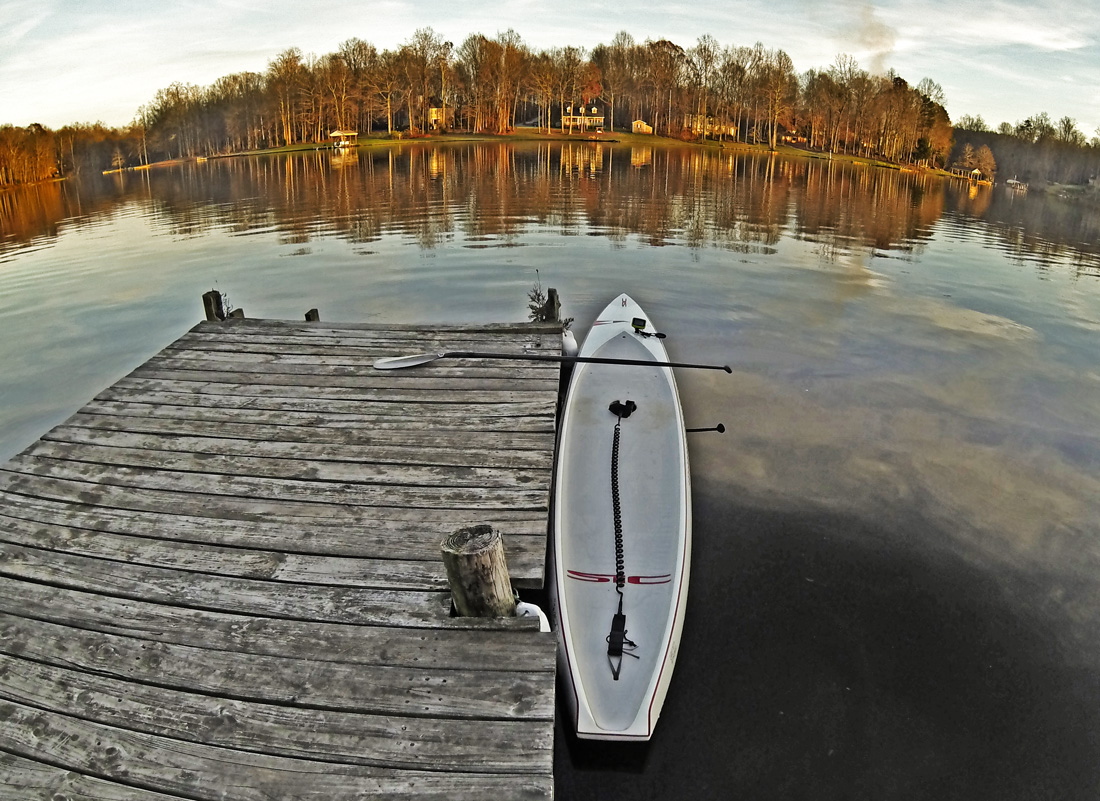
Testing took place on a flat-water course in extremely glassy conditions. All fins were tested on the same board, an SIC X-14.0 PRO-Lite. Results were recorded with a Speedcoach SUP 2. Our test paddler paddled all three trials, paddling “at race pace” on each test interval. Test intervals were 1/4 mile in length and were all paddled in the same direction. Strokes per minute averaged around 48 SPM per trial.
Fins were tested in the following order: FCS Dolphin, Futures Flatwater Keel, Lahui Kai.
Due to the impromptu nature of today’s testing and the fact that our test paddler’s toes got really cold as the sun went down, only one trial was performed with each fin. Future testing will include multiple boards, paddlers, and trials — and probably booties — but this is what we have for now.
The Results
We pretty much knew how these tests would turn out. The Lahui Kai, which is fairly thick and weighs about 800 pounds (or so) would act like a sea anchor. The Dolphin is stiff and kinda light, so it would take middle honors. And the Keel…well, it’s carbon and tiny at 44.4 square inches, so it would probably set the water on fire. So we predicted, in order, the Keel, the Dolphin, and The Brick. As is often the case in these tests, we were surprised.
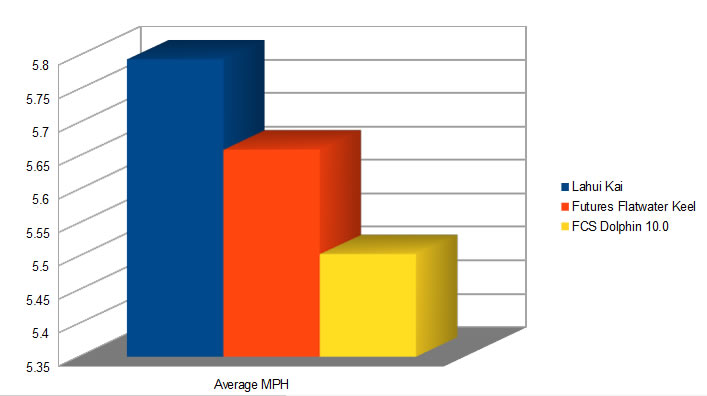
Fastest Fin By Average MPH:
- Lahui Kai Jamie Mitchell (5.794 mph)
- Futures Flatwater Keel (5.659 mph)
- FCS Dolphin 10.0 (5.503)
Time:
- Lahui Kai Jamie Mitchell (2:35.30)
- Futures Flatwater Keel (2:38.90)
- FCS Dolphin 10.0 (2:43.20)
The small differences in time may not seem like much here, but if you extend these times out to a 10k race distance, it’s easy to see how small differences can add up:
- 6.2 miles using the Lahui Kai: 1:20:37
- 6.2 miles using the Flatwater Keel: 1:22:37 – 2 minutes slower
- 6.2 miles using the FCS Dolphin 10.0: 1:24:36 – nearly 4 minutes slower
Oddly, though the Lahui Kai fin felt sluggish the water, it actually produced the fastest run today.
Conclusion

Obviously, our test samples of one run per fin means we’ll probably never get this “research” published (anywhere but here), but this kind of thing is fun and interesting to us. And the results surprised us. We really thought the Keel would run away with this one. But actually, these results make some sense.
The Keel, our favorite for the win, requires excellent technique in order to track straight. A small lapse in technique caused course deviations during the test run, meaning our test paddler didn’t get as many strokes per side as he did with the other two fins. Switching sides slows you down, and it shows in these results. Chances are good the Keel is indeed the faster fin…but only if you paddle straight.
The FCS is long — it digs deep and tracks nice and straight. It’s also an economy fin, not designed to go under a race board. We always keep a few around for our rental and training boards, but we wouldn’t make it our top choice for racing.
The Lahui Kai? Why would this heavier, thicker fin post a better time than the other two fins? Our guess is that the 24″ wide PRO-Elite likes the shape of the fin. It tracked straighter than the Keel, and that was the deciding factor. The combination of excellent tracking and good stability made this fin the winner of the day.
One thing to keep in mind — these results might be completely different on a different paddleboard. It really is important to test your entire setup if you want to squeeze out every bit of possible speed.
So Now What?
Obviously, we’ll do these tests again, but based on today’s fun, we have some definite ideas about future strategy. First, we plan to use the Keel fin as much as possible in training to help us make “perfect” technique an automatic thing. Second, we will be looking into carbon race fins with shapes similar to the Lahui Kai fin. Third, we just might be strapping the Lahui Kai fin onto the PRO-Elite at its next race. And last, we’re going to keep a few of those FCS Dolphins around for backup — sure they’re made for longboards, but they make a pretty good all-purpose SUP fin, too.
*If you want some easy entertainment, walk up to a group of SUP athletes and ask them what the best fin is. Or paddle. Or alpine ski suit…

